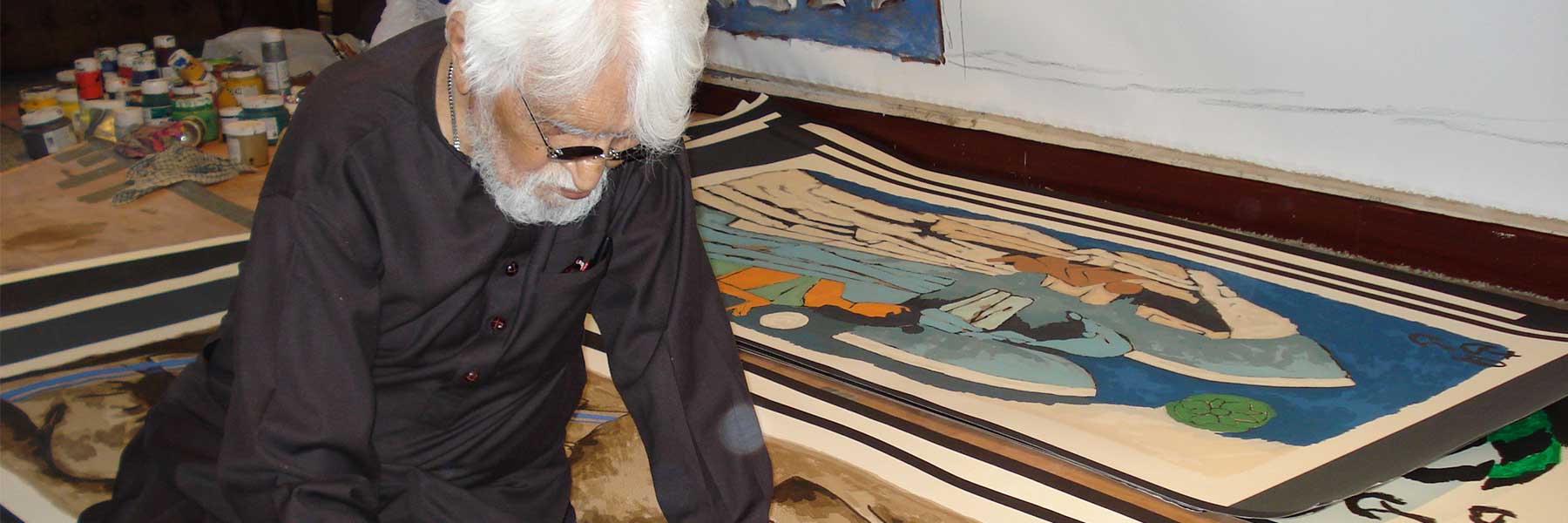
M.F. HUSAIN’S CHINESE SCROLL SERIES
From 2005 to 2009, while in his 90s, the legendary Modernist artist M.F. Husain created the Chinese Scroll Series, a set of 29 large-scale serigraphs featuring two of his most iconic themes: Mother Teresa and horses. Painted by Husain and then developed into silkscreens, the serigraphs themselves are mounted onto black scrolls and intended to hang frameless like traditional Asian paintings. In fact, the series — which includes 11 prints of horses and 18 of Mother Teresa — debuted as a complete collection in a traveling exhibition across Beijing, Shanghai, Singapore and Dubai in 2009. But, Husain’s connection to this part of the world goes back many decades earlier.
In 1952, Husain first traveled to China, where he encountered the clay pottery horse sculptures of the Song dynasty and met with the noted painter Qi Baishi, who was known for depicting animals in traditional Chinese ink. This visit deeply impacted Husain’s artistic sensibilities and the way he began to explore the energy of each brushstroke, so it was only fitting that he returned to this subject later in life. His Chinese Scroll Series thus pays homage to his influential East Asian artists, not only Qi Baishi but also Chinese horse painter Xu Beihong and Japanese woodcut master Hokusai.
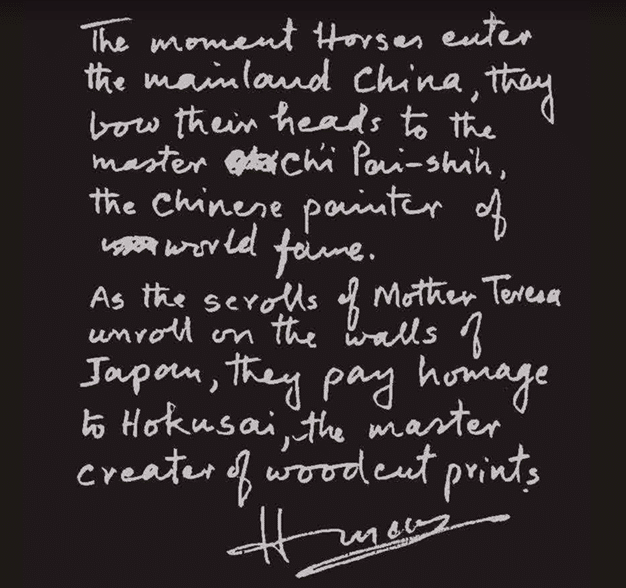
While at first the theme of horses and Mother Teresa may not appear to have much in common, both themes were close to Husain’s heart. He returned to each subject time and again throughout his career, exploring not only their visual possibilities but also their spiritual and cultural connotations to viewers. Both horses and Mother Teresa are compelling symbols, deeply embedded in Husain’s psyche and rooted in his childhood.
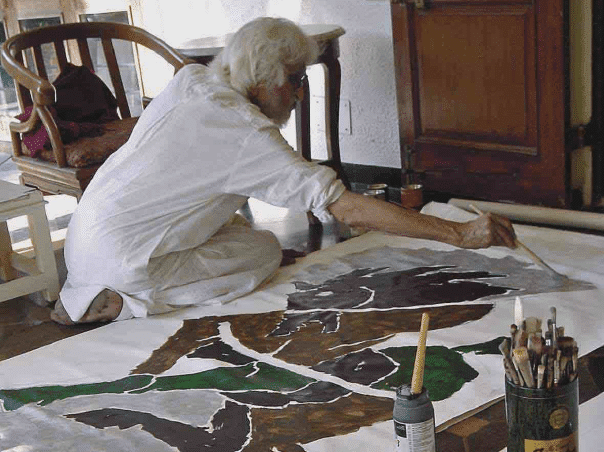
HORSES
The image of the powerful, graceful horse is synonymous with Husain’s work. He became fascinated by these animals at a young age, as he used to observe his grandfather and family friends work with horses and listen to many different legends about them. As Husain once said, “My horses, like lightning, cut across many horizons, hop across spaces, from the battlefield of Kerbala to Bankura terracotta, from the Chinese Tse Pei Hung horse to St. Marco’s horse, from the ornate armoured Duldul to the challenging white of Ashvamedha… the cavalcade of my horse is multidimensional.”
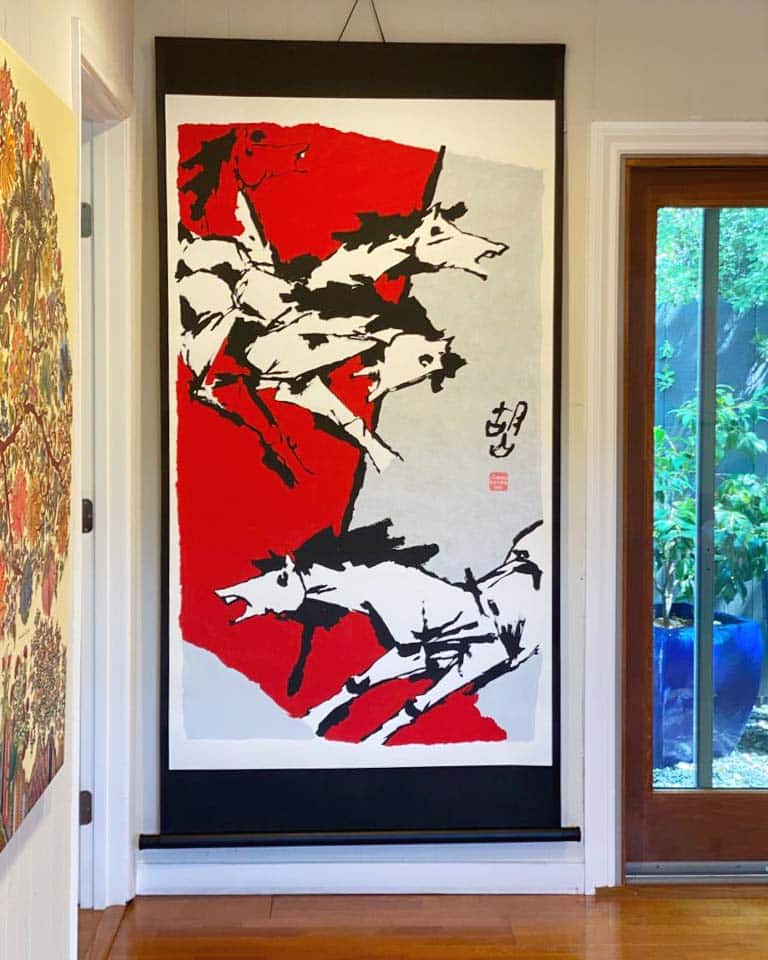
It was Husain’s visit to China that solidified the majestic horse he has become most known for: galloping, rearing, tossing their hind legs and manes. As one of his signature motifs, the horse also expresses the spirit of Husain. Each brushstroke and painted gesture captures the energy of the artist himself — the vigor of the artist’s hand becomes the physical strength of the horse, translating first from life to canvas and then into print.
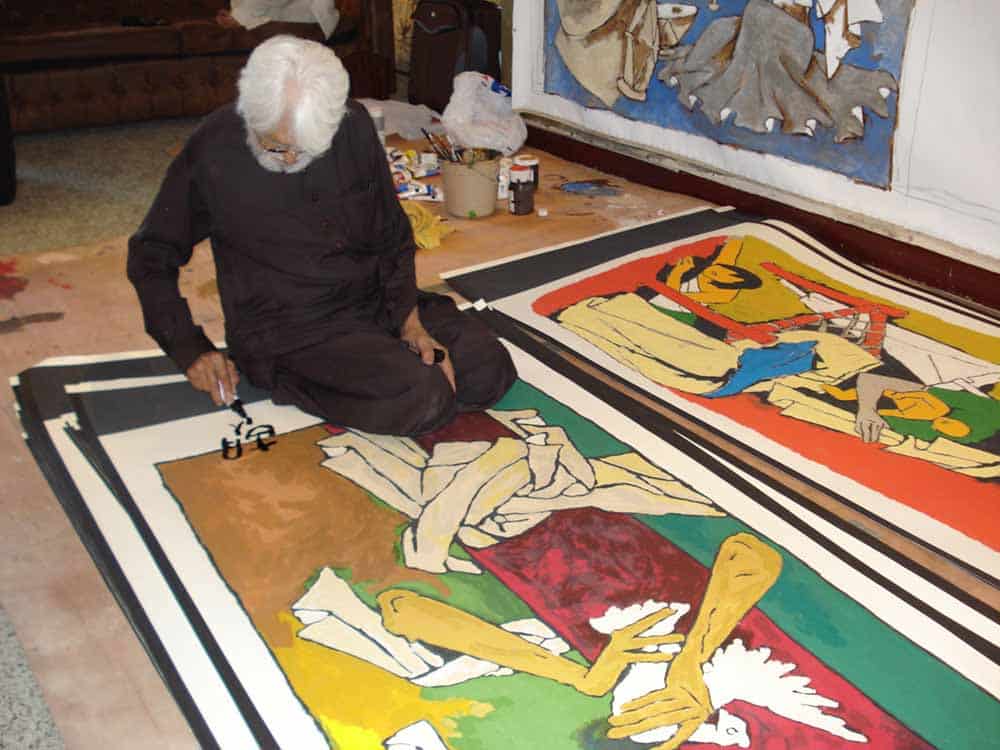
MOTHER TERESA
In 1979, Husain met Mother Teresa at Delhi airport. He quickly sketched her portrait, which she then autographed with “God bless you.” This meeting and her kindness clearly left an impression on the artist, who began portraying her in his art for more than two decades.
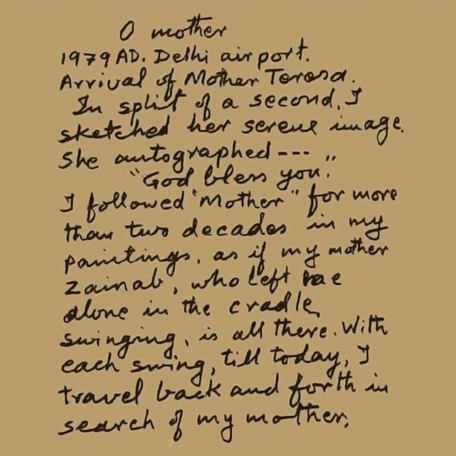
This theme had a particularly personal resonance for Husain, who lost his mother as an infant. Her death created an absence that he felt deeply throughout his life. Consequently, Husain portrays Mother Teresa not only as a real person but also as a metaphor for ideal motherhood, representing the strength, nourishment and empathy he felt he missed. As the children in his serigraphs cling to Mother Teresa’s arms and clothes, so Husain yearns for his own mother.
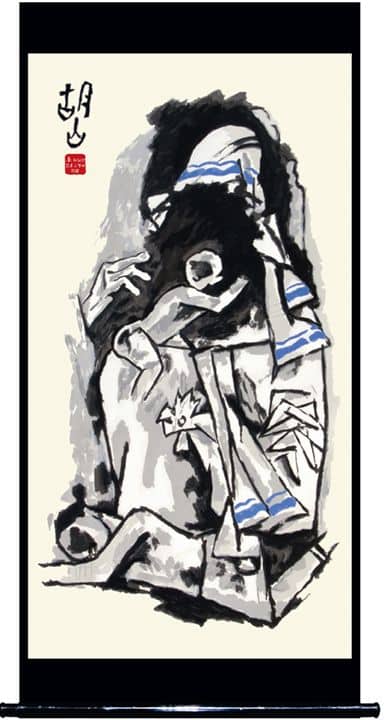
I hope you have enjoyed learning more about the touching stories and symbols behind Husain’s Chinese Scroll series. Please visit https://laasyaart.com/maqbool-fida-m-f-husain/ to browse serigraphs by artist M.F. Husain online. If you have any questions, please do not hesitate to reach out at info@laasyaart.com or +1 650-770-9088.
— Sonia Nayyar Patwardhan

Leave a Reply
You must be logged in to post a comment.